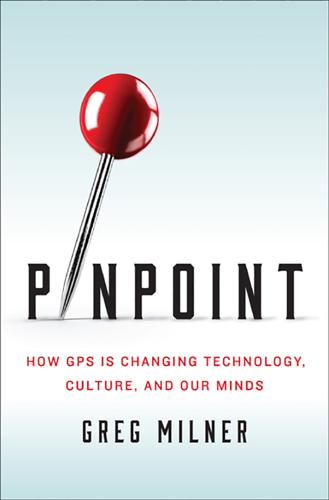
Pinpoint: How GPS Is Changing Our World
by
Greg Milner
Published 4 May 2016
In a DGPS network, one or more continuously operating GPS receivers broadcasts the correction to any GPS receivers in the area authorized to receive the correction. These receivers adjust their calculations accordingly. Even absent the intentional errors of selective availability, DGPS is a useful way to strengthen the accuracy of GPS readings. Nations began to set up their own DGPS networks, particularly around coastal areas, where they served to make GPS more accurate for mariners and improve international trade. In the United States, this created the odd situation of one branch of the Armed Forces strengthening GPS for civilians, via a DGPS network administered by the Coast Guard, while the official military policy was to degrade civilian GPS through selective availability.
…
In the United States, this created the odd situation of one branch of the Armed Forces strengthening GPS for civilians, via a DGPS network administered by the Coast Guard, while the official military policy was to degrade civilian GPS through selective availability. With each passing year in the 1990s, the continued development of differential GPS methods made selective availability look increasingly worthless—a point Javad Ashjaee made by running an Ashtech ad featuring the Mona Lisa with various parts missing—the idea being, why would you willfully corrupt the masterpiece that is GPS? “Back in those days, it had some legitimacy in terms of the uncertainty it afforded to adversaries,” McNeff says. “But at some point, you have to say we’re fighting yesterday’s war, we need to look at how we live in this new environment and deal with it.
…
“This will mean that civilian users of GPS will be able to pinpoint locations up to ten times more accurately than they do now,” Clinton said in a statement. The death of selective availability was catalytic for the GPS industry. Within two weeks, Garmin’s sales were up 40 percent and Magellan’s retailers were setting company records. Gauging the overall value of GPS is nearly impossible. In 2011, when members of the GPS regulatory and scientific community mobilized against plans to authorize a private wireless network they feared would threaten the GPS signal, several cited the barely fathomable figure of $3 trillion as the market’s value. It has become difficult to untangle the worth of GPS from the worth of everything. In an increasingly cloud-based world, the global market for the so-called “Internet of things”—the ability for physical objects (including people) to exchange data over cloud-based networks—could reach $1.5 trillion by 2020.
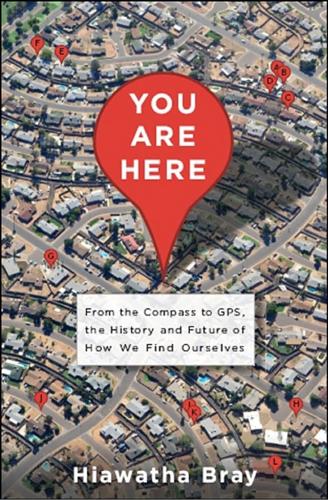
You Are Here: From the Compass to GPS, the History and Future of How We Find Ourselves
by
Hiawatha Bray
Published 31 Mar 2014
The trouble was that there were not enough military-grade GPS units to go around. Desperate to get the technology to the troops, the US military bought thousands of civilian GPS units, which at the time were mostly being used by backpackers, hunters, and land surveyors. Thanks to selective availability, these units were not nearly as accurate as the military kind. The Pentagon finally ordered that selective availability be switched off, and in August 1990 it was. Instantly, civilian GPS units became almost as accurate as their military cousins. It was too good to last; with Saddam Hussein safely defeated by July 1991, selective availability was reactivated and civilian GPS restored to its previous level of mediocrity.28 By December 1993 a full complement of twenty-four GPS satellites was in place, providing worldwide service to civilian users.
…
America had to settle for persuading the Europeans to modify their system to ensure it would be interoperable with GPS and also that it would use a military frequency that would not interfere with GPS transmissions. By 1996 the United States decided that selective availability was more trouble than it was worth. In 1996 the Clinton administration announced it would shut down selective availability at an unspecified future date. Concern about competition from GLONASS and Galileo was one reason that the switch was finally thrown on May 1, 2000.32 The United States further undercut Galileo by deciding not to charge user fees for access to civilian GPS services. Whereas the Europeans would bill customers for their most precise location services, the entire cost of GPS would be borne solely by US taxpayers.
…
Whereas the Europeans would bill customers for their most precise location services, the entire cost of GPS would be borne solely by US taxpayers. Around the world many commercial GPS users feared that the United States would tamper with the accuracy of the service during some future conflict. Yet even after the terrorist attacks of September 11, 2001, and the subsequent wars in Iraq and Afghanistan, selective availability was not reactivated. In 2007 the United States officially pledged that selective availability would never be used again. In fact, in 2014 it will begin launching a new generation of GPS satellites that lack the capacity for selective capability, because the necessary hardware will no longer be installed.33 Eliminating selective availability was not just good news for navigators.
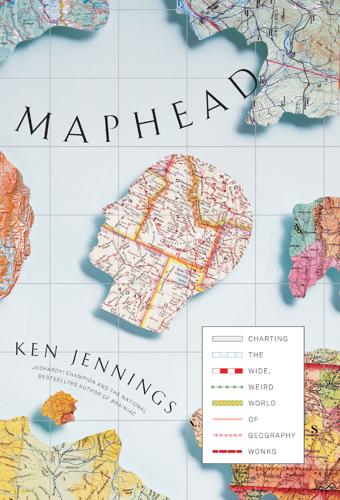
Maphead: Charting the Wide, Weird World of Geography Wonks
by
Ken Jennings
Published 19 Sep 2011
But by the late 1990s, this scrambling, euphemistically called “selective availability,” was becoming obsolete. The military had figured out how to localize its GPS jamming in places where secrecy was an issue, and a new ground-based technology called Differential GPS was allowing civilians to improve on satellite data anyway. So President Bill Clinton ordered “selective availability” to be turned off altogether, and in the spring of 2000, White House science advisor Neal Lane announced the big moment. “All the people who’ve bought a GPS receiver for a boat or a car, or whether they use one in business or for recreation, will find that they are ten times more accurate as of midnight tonight,” he told reporters.
…
In March, he’d been snowmobiling to the peak of Mount Saint Helens, trying to follow a trail he’d taken once before. But selective availability led him one hundred yards off course, and he shot out over an ice ridge he wasn’t expecting. “I slid down one side of the mountain on my back, and the machine went down the other side of the mountain, end over end, and got demolished. It was quite an eye-opening experience about what three hundred feet can do to you.” Seeing his signal converge on his home that May night was like putting on a pair of eyeglasses after enduring a lifetime of astigmatism. Later, lying in bed, he was too excited to sleep. The scrambled GPS of the 1990s could tell you that you were in a football stadium (which, if you were in a football stadium, you probably already knew) but the new technology could tell you exactly which yard marker you were standing on, and that opened new horizons.
…
On a woodland turnout by the side of a winding hillside road a mile from his home, he pulled over and half buried a five-gallon bucket containing a notebook where finders could sign their names, four dollars in cash, George of the Jungle on VHS, a Ross Perot book, mapping software, the handle of a slingshot, and a can of beans.* Then he posted the latitude and longitude of that spot on an Internet newsgroup for GPS users. That first announcement was startlingly prophetic, envisioning in detail not just a single celebratory stunt but an ongoing international treasure hunt in embryo: Now that SA [selective availability] is off, we can start a worldwide Stash Game! With non-SA accuracy, it should be easy to find a stash from waypoint information. Waypoints of secret stashes could be shared on the Internet, people could navigate to the stashes and get some stuff.

Accessory to War: The Unspoken Alliance Between Astrophysics and the Military
by
Neil Degrasse Tyson
and
Avis Lang
Published 10 Sep 2018
“Nuclear Inspection Chief Reports Finding No New Weapons,” transcript, New York Times, Jan. 28, 2003. 34.GPS.gov, “Selective Availability,” www.gps.gov/systems/gps/modernization/sa/; “Data from the First Week Without Selective Availability: GPS Fluctuations Over Time on May 2, 2000,” www.gps.gov/systems/gps/modernization/sa/data/. Reported maximum accuracy varies from 2.66 meters (just under nine feet) to 2.2 meters (just over seven feet); Bob Brewin, “Pentagon Tweaked GPS Accuracy to Within Three Meters During Iraq War,” Computerworld, June 24, 2003, www.computerworld.com/article/2569842/mobile-wireless/pentagon-tweaked-gps-accuracy-to-within-three-meters-during-iraq-war.html (accessed Apr. 30, 2017); William B.
…
The Occult Roots of Nazism: Secret Aryan Cults and Their Influence on Nazi Ideology: The Ariosophists of Austria and Germany, 1890–1935. New York: New York University Press, 1992. GPS.gov. “Selective Availability.” Grafton, Anthony. “Girolamo Cardano and the Tradition of Classical Astrology: The Rothschild Lecture, 1995.” Proceedings of the American Philosophical Society 142:3 (Sept. 1998), 323–54. Gray, Colin S. “Clausewitz Rules, OK? The Future Is the Past: With GPS.” Review of International Studies 25 (Dec. 1999), 161–82. ——— . “The Influence of Space Power upon History.” Comparative Strategy 15:4 (1996), 293–308. Greely, A.
…
Atoms for Peace, 287, 498–99n on military-industrial complex, 26, 161, 404 military space budget, 282 military space efforts, 273–74, 278–79 moratorium on nuclear testing, 307 presidential exit speech, 26, 161 Project Plowshare, 287, 499n proposed ban on weapons in space, 281 quest for both peace and preparedness, 275–78, 493–94n satellite proposals, 267, 271, 488n, 491n science advisor appointed, 269, 491n Supreme Allied Commander in Europe, 269, 275 Vela Hotel satellites and, 216 electric telegraphs, 118, 123 electromagnetic pulse, 290 electromagnetic spectrum, 100–101, 168–69, 170–71, 199–200, 209, 213–14 Elements of Geometry (Euclid), 44, 107 elements, origin of, 400–403 Ellsberg, Daniel, 248 empire building American empire, 34–36 by Portuguese, 81, 83–84, 87–88 and science, in eighteenth century, 90–91, 95, 439n in seventeenth century, 90 by Spain, 87–88 Enceladus, 196–97 Energiya, 359, 363 Energomash, 363 England, warfare in seventeenth century, 108–9, 443–44n Enlargement of the Committee on the Peaceful Uses of Outer Space, 502n Enola Gay, 457n entanglement (photons), 313, 351 ephemerides, 82, 94 Eratosthenes, 87, 434n, 437n Euclid, 44, 107 Eudoxus of Cnidus, 71, 72, 73 European Defence Agency, 327 European Geostationary Navigation Overlay Service (EGNOS), 328 European Launcher Development Organisation, 326 European Space Agency ACES (Atomic Clock Ensemble in Space), 339 collaboration with China, 377 collaboration with Russia, 364 Columbus laboratory linked to ISS, 368 nonmilitary mandate, 326–27, 329–30 recent successes, 32 science spending, 520n, 533n space weather prediction, 160–61 weather satellites, 341 European Space Research Organisation, 326 European Union code of space conduct, 397 Common Security and Defence Policy, 327 military spending, 327, 512n nonmilitary interest in space, 22, 326–27 reliance on soft power, 326 space spending, 329 “Space Strategy for Europe,” 328–29 stability as vital goal, 325–26 terrorist attacks, 327 on threats to global security, 14 ExoMars, 364 exoplanets, detection of, 175, 399 Experiments and Observations on Electricity (Franklin), 123 Explorer 1 satellite, 269 Explorer XI satellite, 213–14 exports of military space systems, 300, 505n eye (human), abilities and limitations of, 100–101 Fair Housing Act of 1968, 288 FAST (Five-hundred-meter Aperture Spherical Telescope), 182 “Fat Man” (Nagasaki), 303, 307, 505n Fermi Gamma-ray Space Telescope (NASA), 199 financial crisis of 2008–2009, 3–4 Finnish Meteorological Institute, 385 First Battle of Bull Run, 124, 448n, 449n first use of nuclear weapons, as option, 308, 309 Five D’s: deception, disruption, denial, degradation, and destruction, 322 Fizeau, Armand-Hippolyte-Louis, 144 Flamsteed, John, 52, 94 FOBS (Fractional Orbital Bombardment System), 286 F-117A stealth fighter, 197, 198, 332, 470n, 514n food for mariners, 84–85 Food Stamps Act of 1964, 288 Fort Sumter, 124 Foucault, Jean-Bernard-Léon, 92, 133, 144 Fowler, William, 402 Fox Talbot, William Henry, 142, 455n Franklin, Benjamin, 112, 123 Fraunhofer, Joseph von, 146 Fraunhofer lines, 146, 147 Frederick the Great, 111, 130, 446n “freedom of space” issue after Sputnik, 268–69, 301, 505n frequency, defined, 100 Frisius, Regnier Gemma, 95, 441n Fugate, Robert, 155 Fukushima nuclear disaster, 255 Furst, Luther C., 449n fusion bombs, 304, 389, 390, 391, 474n fusion in stars, 304, 389, 390, 391, 400 Gagarin, Yuri, 157, 264, 282 Galaxy IV satellite failure, 478n Galbraith, John Kenneth, 55 Galilei, Galileo astrology, 49, 52–53 discoveries with telescopes, 52, 103, 109–10 drawings, 141, 202, 455n patronage and telescopes, 105–6, 160, 173, 442–43n telescope construction, 102, 107, 110, 441–42n Galileo global positioning system, 160, 329, 337 GAMBIT (KH-8) satellites, 205 gamma-ray bursts, 214–15, 217, 473–74nn gamma rays detection of, 199, 213–18 discovery of, 171, 213 Earth’s atmosphere and, 214 generation by cosmic rays, 218 Garwin, Richard L., 249, 250–51, 377, 482n, 485n General Dynamics, 11, 18 Generall Historie of Virginia (Smith), 436n general theory of relativity, 182 geodetic meridian, 99 Geographike Hyphegesis (Ptolemy), 50, 78, 85, 86, 87 George III (king), 96 geostationary orbit (GEO), 278–79, 494n Germany air war against in World War II, 189–90 export and manufacturing after World War I, 137–39, 453n, 454nn exports before World War I, 137, 453n radar development, 186, 465n rearming in 1930s, 186 withdrawal from the League of Nations, 139 Gettysburg, 126–27, 449nn Giacconi, Riccardo, 225, 226 Giant Metrewave Radio Telescope, 182–83 glass, 131 see also optical glass Glaucon, 46 global GDP, 403, 533n Global Positioning System (GPS) accuracy and precision, 332, 333, 336–37, 513n Air Force control of, 158, 337 Beidou system (China), 337 cruise missiles and, 332, 346 in first Gulf War, 332–36 funding, 337, 516n Galileo system (EU), 160, 329, 337 and geodetic meridian, 99 GLONASS system (Russia), 160, 337–38, 362, 363, 516n GPS III, 337 ionosphere and, 333 in Iraq War, 336, 346, 348 jamming of, 333, 515n, 516n NAVSTAR Global Positioning System, 278, 332, 335–36 overview, 158, 332–33, 339–40 selective availability, 336 smart bombs and, 335 global security, 14–15 GLONASS global positioning system, 160, 337–38, 362, 363, 516n GNSS (global navigation satellite systems), 337 Goddard, Robert, 192 Goebbels, Paul Joseph, 58, 59, 60, 61–62, 428n, 429n Goerner, F.

Peers Inc: How People and Platforms Are Inventing the Collaborative Economy and Reinventing Capitalism
by
Robin Chase
Published 14 May 2015
These tragic deaths could have been avoided if the pilot had had access to GPS. So President Ronald Reagan issued a directive making GPS freely available for civilian use, once it was sufficiently developed, as a common good.1 The U.S. government initially configured the GPS platform to determine positions with a one-hundred-meter resolution—adequate for determining whether you were in another country’s airspace, but not that useful if you were lost in a city. In 1996, President Bill Clinton announced that the U.S. government would stop its intentional degradation of the civilian GPS signal—called Selective Availability—to change the resolution from a hundred meters down to twenty meters by 2000.
…
Medium.com, July 1, 2014, https://medium.com/message/what-does-the-facebook-experiment-teach-us-c858c08e287f. CHAPTER 7: FOR THE PEOPLE 1. Jeffrey K. McGee, “Global Positioning System Selective Availability: Legal, Economic, and Moral Considerations,” School of Advanced Military Studies, U.S. Army Command and General Staff College, Fort Leavenworth, KS, November 23, 1999. 2. “Military Satellite System to Go Public,” CNN.com, March 29, 1996. 3. “Improving the Civilian Global Positioning System (GPS),” speech by President Bill Clinton, May 1, 2000, http://clinton3.nara.gov/WH/EOP/OSTP/html/0053_4.html. 4. “Global Positioning System,” Wikipedia, http://en.wikipedia.org/wiki/Global_Positioning_System. 5.
…
Waze succeeds, and beat out its navigation system competitors, by dint of the millions of real-time, very local, very specific contributions of the drivers in the Waze community. GPS is itself a platform for participation (enabled by the Standard Positioning Service and other protocols) that makes available the excess capacity of the U.S. government-owned and -operated navigation system. With GPS, the peers might be individuals, small local companies, or big multinationals—any of millions of different entities worldwide who have thought up the myriad of ways GPS might be useful. Waze is one of them. We can be sure that when the government researchers and scientists first envisioned and built the GPS system, none of them were imagining it would enable individual drivers to communicate their speeds and locations to the benefit of all.

How We Got Here: A Slightly Irreverent History of Technology and Markets
by
Andy Kessler
Published 13 Jun 2005
The PPS mode sends a highly accurate but encrypted signal, so only authorized users with the right “keys” can use it. There is also an SA or Selective Availability mode, in other words, DoD can degrade accuracy to 50-100 meters from 5-15 for Coarse Acquisition users, in times of war. Or when they feel like it. Until May of 2000, SA mode was usually kept on. The Gulf War and Operation Desert Storm in 1990 and early 1991 proved the value of GPS, even though only 16 satellites were up and working. Helicopters, fighter jets, and tanks all used GPS receivers. CNN showed video of receivers duct-taped to the side of half-tracks. The DoD put in an emergency order for 10,000 units from commercial as well as military suppliers.
…
So many commercial receivers were in use during Desert Storm that the DoD had to turn off Selective Availability so soldiers could get accurate readings. By the time of the 2001 war in Afghanistan and the war in Iraq in 2003, GPS was built into guided missiles and bombs. Troops on the ground could acquire coordinates of a target, and relay them up to B52 bombers who would program precision-guided weapons to blow up exactly where they wanted. Given statistics that 90-99% of bombs dropped during WWII and the Vietnam War missed their intended targets, GPS has changed the face of warfare. But it has also changed the commercial world.
…
Honeywell developed a navigation system based on GPS so that big commercial Boeing aircraft could land themselves. Hardly a ship or yacht goes out to sea without a GPS system. Some hikers live by them. GPS-enabled watches can now track a hiker’s path and a shareware program can download satellite images from the trail and reconstruct a photo tour of the outing. Single chip GPS receivers are being designed into cell phones, so that users can be told exactly where the nearest Starbucks is. Precision guided marketing. The commercial acceptance of GPS is quite telling, GPS 161 and not only the DoD, but also the DoT.

Sextant: A Young Man's Daring Sea Voyage and the Men Who ...
by
David Barrie
Published 12 May 2014
It is reported to have cost the U.S. government $12 billion to develop, and its maintenance is also expensive; in a remarkably generous spirit, the U.S. government made GPS freely available to the public, worldwide, in 1983, though—for reasons of national security—only the U.S. military had access to the most accurate positional data until May 2000, when the system of “selective availability” was ended. The Russians have developed a similar satellite system—GLONASS—and other nations are following their example, as is the European Union. Though the technology it employs is vastly different, GPS bears a conceptual resemblance to the “new” celestial navigation described in Chapter 15. A GPS fix is, in effect, the product of the analysis of equal-altitude circles3 derived from the signals each satellite transmits.
…
Perhaps a more pressing danger, however, arises from inexpensive jamming devices designed to block the reception of the very weak signals emitted by GPS satellites. Drivers of commercial vehicles fitted with GPS trackers sometimes use such jammers to conceal from their employers exactly where they have been, but in so doing they may unintentionally block GPS coverage over a wide radius. Nor is the vulnerability of GPS of concern only to navigators: many of the electronic systems on which modern life depends—including cellular phones and the computers that manage international financial markets—rely on GPS time signals. In view of all these real or potential problems, an “enhanced” modern version of LORAN is being developed to provide a robust and accurate backup to GPS.6 STRANGELY ENOUGH, THE work of an artist—James Turrell—has helped me understand why navigating with a sextant casts such a powerful spell over me.
…
It would, of course, be more than a little eccentric to dismiss the convenience (and reassurance) of electronic guidance systems, but reading off numbers from a digital display is a very thin, prosaic experience compared with the practice of celestial navigation. GPS banishes the need to pay attention to our surroundings, and distances us from the natural world; although it tells us precisely where we are, we learn nothing else from it. Indeed, unthinking reliance on GPS weakens our capacity to find our way using our senses. By contrast, the practice of celestial navigation extends our skills and deepens our relationship with the universe around us. What could be more wonderful than to join the long line of those who have found their way across the seas by the light of the sun, moon, and stars?

The Perfectionists: How Precision Engineers Created the Modern World
by
Simon Winchester
Published 7 May 2018
Defense Department, fretting that the common man should not be privy to the exact whereabouts of the Oval Office, certainly not to the nearest meter or two, demanded that the air force introduce a deliberate error into the system, corrupting it slightly so that civilian users could never know a location to a better accuracy than one hundred fifty feet horizontally and three hundred feet vertically. Yet that restriction, what was called selective availability, was scrapped in 2000 on the orders of President Clinton. Ever since then, users worldwide have been able to use GPS receivers in everything from their cars to their telephones to wristwatches to handheld devices taken on hunting expeditions and weekend sailing vacations, to get accuracies of just the barest few meters. Survey teams, using special receivers and being able to wait while more and more satellites swim into view—at least four satellites must be in line of sight to give a decent reading; some surveyors wait until they can communicate with as many as twelve—claim to be able to site with a precision of just a few millimeters.
…
The first ten devices of Block 1 were placed into orbit between 1978 and 1985, with GPS as a working system being formally inaugurated in February 1978, though for the exclusive use initially of the U.S. military. Some military strikes (on Libya’s leadership, for example) were then carried out with the use of GPS targeting. Weapons were designed and bombs were fitted with inbuilt GPS—smart bombs, as they were known. Subsequently, entire wars (the Gulf War of 1991 being arguably the first) were fought with GPS as an essential part of planning and tactics. (The lead tanks that headed the columns of troops into Kuwait were all equipped with GPS receivers.) There have since been seventy GPS satellites put into medium Earth orbit, about twelve thousand miles up.
…
For, while the fact that each satellite sends out its precise position information is important, the fact that it is also sending out a super-accurate time signal is of truly extraordinary importance, as the function of the GPS goes some way beyond simply assisting the planet with its navigational needs. GPS clocks, it can fairly be said, run most of the modern world’s economy, and ensure that it runs on time, and to within the tiniest fractions of a millisecond. A technician in the ops room of the U.S. Air Force Second Space Operations Squadron, which manages the thirty-one GPS satellites that offer to receivers across most of the world highly accurate navigation and position information. In summary: the complex utility of the flotilla of GPS satellites hovering or scooting above Earth is about time.
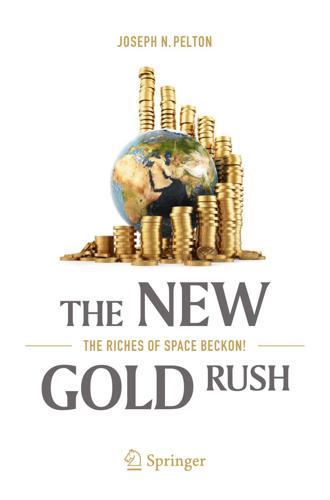
The New Gold Rush: The Riches of Space Beckon!
by
Joseph N. Pelton
Published 5 Nov 2016
There are many receivers that are dual use for the U. S. GPS and the Russian Glonass network, but many fewer that can access the other GNSS networks. The U. S. GPS network was initially equipped with “selective availability” that could be turned on to provide much less accuracy for users without classified access. The United States, however, decided to not use this type of masking of the accuracy of their network during the Clinton administration . This was in part because of the many vital civilian applications that had migrated to the GPS network and in part because an engineer at the Jet Propulsion Lab had developed and patented a calculation system to defeat the “selective available” system.
…
The Satellite Navigation and Timing Industry The precise satellite navigation and timing systems that operate today began with a particular military application in mind—namely the guidance and targeting of weapon systems . The initial U. S. Navstar system known widely as the Global Positioning Satellite (GPS) system was developed to allow precise targeting of missiles and aircraft bombers. At the time of the GPS system inception few people could have envisioned the remarkably wide range of applications that would eventually evolve from such a satellite network. The technology that allows them to operate are on-board atomic clocks that are precise to billionths of a second, and the propagation time for signals from a large constellation of these satellites allows some rapid computation to convert these times to travel from the satellite to the reception point to determine very exact locations.
…
These systems are used for surveyors to determine boundary lines, for bankers and credit card companies to time stamp financial transactions, for pilots to take off and land aircraft more safely, even in bad weather, and by shipping fleets to avoid storms and come to port sooner. There is a website devoted to explaining more than 100 applications for GPS and other precise navigation and timing satellite networks. The Soviet/Russian system known as GLONASS was the second such system, but today virtually every major spacefaring company has their own precise navigation and timing network. In addition to GPS and GLONASS there is the Galileo system in Europe that is just beginning to be deployed, the Japanese quasi-zenith system, the Chinese Beidou and Compass (i.e., Beidou-2) and the Indian Regional Navigational Satellite System .

The Second Machine Age: Work, Progress, and Prosperity in a Time of Brilliant Technologies
by
Erik Brynjolfsson
and
Andrew McAfee
Published 20 Jan 2014
Boyan Brodaric, Field Data Capture and Manipulation Using GSC Fieldlog V3.0, U.S. Geological Survey Open-File Report 97-269 (Geological Survey of Canada, October 7, 1997), http://pubs.usgs.gov/of/1997/of97-269/brodaric.html. 23. Selective Availability (National Coordination Office for Space-Based Positioning, Navigation, and Timing, February 17, 2012), http://www.gps.gov/systems/gps/modernization/sa/. Chapter 5 INNOVATION: DECLINING OR RECOMBINING? 1. Henry Southgate, Many Thoughts of Many Minds: Being a Treasury of Reference Consisting of Selections from the Writings of the Most Celebrated Authors . . .
…
As the company website explains: The idea for Waze originated years ago, when Ehud Shabtai . . . was given a PDA with an external GPS device pre-installed with navigation software. Ehud’s initial excitement quickly gave way to disappointment—the product didn’t reflect the dynamic changes that characterize real conditions on the road. . . . Ehud took matters into his own hands. . . . His goal? To accurately reflect the road system, state of traffic and all the information relevant to drivers at any given moment.2 Anyone who has used a traditional GPS system will recognize Shabtai’s frustration. Yes, they know your precise location thanks to a network of twenty-four geosynchronous GPS satellites built and maintained by the U.S. government.
…
If it’s rush hour, however, this theoretically quickest route will not actually be the quickest one; with thousands of cars squeezing onto the major roads and highways, traffic speed will not approach, let alone eclipse, the speed limit. Andy should instead seek out all the sneaky little back roads that longtime commuters know about. Andy’s GPS knows that these roads exist (if it’s up-to-date, it knows about all roads), but doesn’t know that they’re the best option at eight forty-five on a Tuesday morning. Even if he starts out on back roads, his well-meaning GPS will keep rerouting him onto the highway. Shabtai recognized that a truly useful GPS system needed to know more than where the car was on the road. It also needed to know where other cars were and how fast they were moving. When the first smartphones appeared he saw an opportunity, founding Waze in 2008 along with Uri Levine and Amir Shinar.

The Next Great Migration: The Beauty and Terror of Life on the Move
by
Sonia Shah
Botanists settled on two equally unsatisfying explanations Marris, “Tree Hitched a Ride.” Vicariance theory attributed the separation of monkey species Queiroz, Monkey’s Voyage, 166–67, 212–13, 293. “Giant flukes happen” Marris, “Tree Hitched a ride.” Defense Department stopped adding a jitter to its GPS “Frequently Asked Questions About Selective Availability: Updated October 2001,” GPS.gov, https://www.gps.gov/systems/gps/modernization/sa/faq/. allowed people to track the once-undetectable movements Cheshire and Uberti, Where the Animals Go. “we find totally amazing new information …” Wikelski interview. Wild species regularly roam beyond the borders Cheshire and Uberti, Where the Animals Go; Queiroz, Monkey’s Voyage, 148; Wikelski interview; Roland Kays et al., “Terrestrial Animal Tracking as an Eye on Life and Planet,” Science 348, no. 6240 (2015): aaa2478; Kessler, “Most Extreme Migration?”
…
That was when the Defense Department stopped adding a jitter to its GPS32 satellites’ signals, allowing them to flow uninterrupted to anyone in the world with a receiver. (They had figured out a way to selectively block the signals as necessary to deter adversaries.) An $8 billion GPS technology industry sprang up, unleashing a blizzard of new products, including solar-powered GPS tags so small and light, they could be attached to the furry ear of a baby bear or the slippery shell of a sea turtle. New solar-powered GPS tags allowed people to track the once-undetectable movements33 of animals continuously, in real time, over their entire ranges and lifetimes. Animal-tracking scientists such as the ornithologist Martin Wikelski, who had grown up on a farm in Bavaria amazed by the local barn swallows that flew all the way to South Africa, quickly outfitted their roving subjects—cranes, dragonflies, oilbirds, and more—with the new tags.
…
By the 1990s, its Global Positioning System of satellites emitted signals continuously, and there were so many that at least four could be detected at any place on earth at any time of day. In theory, animals outfitted with GPS tags could be tracked wherever they went on the planet, with no need to follow them around with a receiver. But fearful of aiding adversaries with navigational prowess, the Defense Department introduced an unpredictable and erratic jitter into the signals, purposely degrading their accuracy. The GPS signals could be accurately interpreted only by receivers owned by the military. Everyone else got a uselessly faulty result. And so for scientists as for the rest of us, the movements of animals remained mostly hidden.

The Pentagon's Brain: An Uncensored History of DARPA, America's Top-Secret Military Research Agency
by
Annie Jacobsen
Published 14 Sep 2015
The U.S. military now had precise navigational coverage of the entire world, in all weather conditions, in real time. During the 1990s, interest in satellite-based global positioning technology grew, and European companies began developing GPS-like systems for civilian use. In an effort to keep the United States at the forefront of the burgeoning new industry, in May 2000 President Clinton discontinued the selective availability feature on GPS, giving billions of people access to precise GPS technology, developed by DARPA. To Albert Wohlstetter, working on the DARPA analysis in the mid-1970s, the fusion of various Vietnam-era technology systems—sensors, computers, laser-guided weapons, the ARPANET, drones—offered great promise and potential in the development of what he called a “system of systems.”
…
It began in 1959, when ARPA contracted with the Johns Hopkins Applied Physics Laboratory to create the first satellite positioning system, using six satellites, three for positioning and three as spares. After several failed launches, TRANSIT finally took up residence in space in June 1963. To deny enemy access to this kind of precise targeting information, the system was originally designed with an offset feature built in, called selective availability (SA). If an individual were able to access the GPS system with a private receiver, the information would be offset by several hundred feet. Over the next ten years, the Navy and the Air Force developed their own satellite-based navigational systems, but each system was incompatible with the other. In 1973 the Pentagon ordered DARPA to create a single system shared by all the military services, and a new DARPA program called NAVSTAR Global Positioning System emerged.
…
Conceivably, as computers got smaller and were able to process data faster, a drone could be sent deep behind enemy lines to photograph targets and send the images to commanders in real time. Another significant DARPA technology that allowed these Vietnam-era systems to converge was a satellite-based navigation technology called Global Positioning Systems, or GPS. GPS began as a classified military program, the purpose of which was to direct weapons to precise targets. DARPA’s pioneering GPS program was called TRANSIT. It began in 1959, when ARPA contracted with the Johns Hopkins Applied Physics Laboratory to create the first satellite positioning system, using six satellites, three for positioning and three as spares. After several failed launches, TRANSIT finally took up residence in space in June 1963.

MegaThreats: Ten Dangerous Trends That Imperil Our Future, and How to Survive Them
by
Nouriel Roubini
Published 17 Oct 2022
Kevin Rudd, “The Avoidable War: The Decade of Living Dangerously: Navigating the Shoals of U.S.-China Relations,” Asia Society Policy Institute, February 2021, p. 22, https://asiasociety.org/policy-institute/avoidable-war-decade-living-dangerously. 27. Fareed Zakaria, “The US and China’s ‘Cold Peace,’” Fareed Zakaria GPS, CNN, https://www.cnn.com/videos/tv/2021/08/08/exp-gps-0808-fareeds-take.cnn @ 1:20. August 8, 2021. 28. Cissy Zhou, “U.S.-China Decoupling,” South China Morning Post, September 16, 2021, https://www.scmp.com/economy/china-economy/article/3149027/us-china-decoupling-if-it-comes-down-us-bloc-vs-china-bloc. 29. Cissy Zhou, “US-China Decoupling,” South China Morning Post, September 16, 2021, https://www.scmp.com/economy/china-economy/article/3149027/us-china-decoupling-if-it-comes-down-us-bloc-vs-china-bloc. 30.
…
“US Has Already Lost AI Fight to China,” Financial Times, October 10, 2021, https://www.ft.com/content/f939db9a-40af-4bd1-b67d-10492535f8e0. 33. “NATO to Expand Focus to Counter Rising China,” Financial Times, October 18, 2021, https://www.ft.com/content/0202ed6e-62d1-44b6-a61c-8b1278fcf31b. 34. Fareed Zakaria, “The Complex China Challenge,” Fareed Zakaria GPS, CNN, https://www.cnn.com/videos/tv/2021/08/08/exp-gps-0808-fareeds-take.cnn @ 2:12. Augst 8, 2021. 35. “NATO to Expand Focus to Counter Rising China,” Financial Times, https://www.ft.com/content/0202ed6e-62d1-44b6-a61c-8b1278fcf31b. 36. “Remarks as Prepared for Delivery of Ambassador Katerine tai Outlining the Biden-Harris Administration’s ‘New Approach to the U.S.
…
A study by the Pew Research Center in 2017 concluded that three-fourths of Americans find it at least “somewhat realistic” that robots and computers will eventually handle most jobs that people do now. In Japan, convenience store operator FamilyMart has embraced AI, partly in response to the country’s worker shortage. The company intends to open one thousand fully automated shops by the end of 2024. An unmanned FamilyMart outlet will stock around three thousand items, the same selection available in shops where people work. A trial store about a third the usual size used fifty cameras to monitor activity and handle payment.20 Algorithms are rewriting the art of selling. “Retail Set to Overtake Banking in AI Spending,” the Wall Street Journal reported in 2021. The website Pinterest assists retailers that use the site to sell their goods.

The Organized Mind: Thinking Straight in the Age of Information Overload
by
Daniel J. Levitin
Published 18 Aug 2014
There’s also a mathematical principle at work: The temptation to search in the hope of finding a better match causes the online dater to read profiles that are increasingly far afield from the good matches, thereby reducing the average quality of matches in the selection set. Decision overload sets in, and daters make poorer choices as they become less selective. availability of attractive alternatives Lydon, J. E. (2010). How to forego forbidden fruit: The regulation of attractive alternatives as a commitment mechanism. Social and Personality Psychology Compass, 4(8), 635–644. 81% lie Toma, C. L., Hancock, J. T., & Ellison, N. B. (2008). Separating fact from fiction: An examination of deceptive self-presentation in online dating profiles.
…
That buzzword of the aughts doesn’t happen just on the job anymore. The smartphones and tablets have come home to roost. Our cell phones have become Swiss Army knife–like appliances that include a dictionary, calculator, Web browser, e-mail client, Game Boy, appointment calendar, voice recorder, guitar tuner, weather forecaster, GPS, texter, tweeter, Facebook updater, and flashlight. They’re more powerful and do more things than the most advanced computer at IBM corporate headquarters thirty years ago. And we use them all the time, part of a twenty-first-century mania for cramming everything we do into every single spare moment of downtime.
…
Further speculation revolved around the use of reconnaissance planes, telescopes, sonar, and radar. And what about spectrograms, chemical sensors, lasers? Tom Tombrello, physics professor at Caltech, favored a sneaky approach: “I would have figured out a way to get to the balloons before they were launched, and planted GPS tracking devices on them. Then finding them is trivial.” The contest was entered by 53 teams totaling 4,300 volunteers. The winning team, a group of researchers from MIT, solved the problem in just under nine hours. How did they do it? Not via the kinds of high-tech satellite imaging or reconnaissance that many imagined, but—as you may have guessed—by constructing a massive, ad hoc social network of collaborators and spotters—in short, by crowdsourcing.
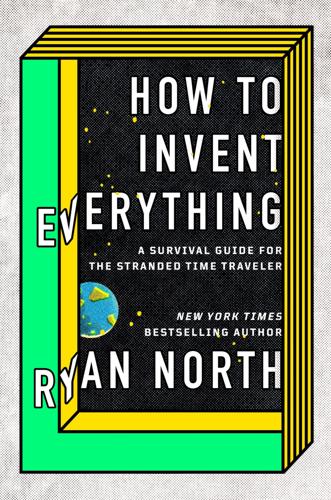
How to Invent Everything: A Survival Guide for the Stranded Time Traveler
by
Ryan North
Published 17 Sep 2018
“Lift from Flow Turning.” National Aeronautics and Space Administration: Glenn Research Center. May 5. https://www.grc.nasa.gov/www/k-12/airplane/right2.html. National Coordination Office for Space-Based Positioning, Navigation, and Timing. 2016 CE. “Selective Availability.” GPS: The Global Positioning System. September 23. http://www.gps.gov/systems/gps/modernization/sa. National Oceanic and Atmospheric Administration’s Office of Response and Restoration. n.d. Chemical Datasheets. https://cameochemicals.noaa.gov. Naval Education. 1971 CE. Basic Machines and How They Work. Dover Publications.

Alcohol: A History
by
Rod Phillips
Published 14 Oct 2014
As we would expect, Falernian wine commanded a premium price: in one of the many taverns of Pompeii that were destroyed by the eruption of Mount Vesuvius, a measure of Falernian cost four times as much as ordinary wine and twice as much as “the best wine.”40 It was not only wine from their peninsula that Romans appreciated, for the selection available in the city was truly imperial in scope. When Pliny the Elder prepared a catalog of wines in the first century of the Christian era, he included 91 varieties of wine, 50 quality wines, and 38 kinds of foreign wines, as well as salted, sweet, and artificial wines.41 He was notable in ranking wines by grape variety as well as their region of production.
…
Chaucer, Canterbury Tales, 269–71. 48. James du Quesnay Adams, Patterns of Medieval Society (Englewood Cliffs, N.J.: Prentice Hall, 1969), 111. 49. Jean Dupebe, “La Diététique et l’Alimentation des Pauvres selon Sylvius,” in Pratiques et Discours Alimentaires à la Renaissance, ed. J.-C. Margolin and R. Sauzet (Paris: G.-P. Maisonneuve et Larose, 1982), 41–56. 50. Quoted in Rose, Wine Trade in Medieval Europe, 138. 51. Ibid. CHAPTER FIVE 1. Mack P. Holt, “Wine, Community and Reformation,” Past and Present 138 (1993): 58–93. 2. Mack P. Holt, “Europe Divided: Wine, Beer and Reformation in Sixteenth-Century Europe,” in Alcohol: A Social and Cultural History, ed.
…
Steckley, “The Wine Economy of Tenerife in the Seventeenth Century: Anglo-Spanish Partnership in a Luxury Trade,” Economic History Review 33 (1980): 335–50. 22. Ken Albala, Eating Right in the Renaissance (Berkeley: University of California Press, 2002), 8. 23. Daniel Rivière, “Le Thème Alimentaire dans le Discours Proverbial de la Renaissance Française,” in Pratiques et Discours Alimentaires à la Renaissance, ed. J.-C. Margolin and R. Sauzet (Paris: G.-P. Maisonneuve et Larose, 1982), 201–18. 24. William Harrison, The Description of England, quoted in William T. Harper, Origins and Rise of the British Distillery (Lewiston: Edwin Mellon, 1999), 38. 25. F. W. Carter, “Cracow’s Wine Trade (Fourteenth to Eighteenth Centuries),” Slavonic and East European Review 65 (1987): 568–69. 26.

Facebook: The Inside Story
by
Steven Levy
Published 25 Feb 2020
But sometimes, an experiment exposed to the general public would raise ethical questions. Or reveal something uncomfortable about Facebook’s powers. One example was the controversial voting study—co-authored by researchers at UCSD and Facebook—that made critics concerned that Facebook could affect elections by selective availability of the “I Voted” button. But the most controversial study in Data Science’s history came in Kogan’s specialty: emotional well-being. In 2014, a study called “Experimental Evidence of Massive Scale Emotional Contagion Through Social Networks” appeared in PNAS. It presented the results of an experiment involving 689,003 Facebook users.
…
True, he had not offered to buy Adam D’Angelo’s company, Quora, when he created Questions to compete with it. But two years earlier a spurned offer was indeed the impetus for a product meant to kill off Foursquare, a mobile app that used geo-location and game techniques to help people find things to do, and find each other. Foursquare’s GPS technology was superb, and Facebook had wanted to buy the company, especially since other tech companies were pursuing it as well. Its co-founder and CEO, Dennis Crowley, met with Zuckerberg multiple times, taking walks in Palo Alto and near Foursquare’s headquarters in New York City’s Union Square.
…
“It stuck with me how gracious he was,” says Crowley. The two CEOs kept in touch, with Crowley visiting the Facebook campus occasionally. At one point, Zuckerberg put him together with some Facebook engineers. By that time Foursquare had advanced its technology to work with an array of different sources—Wi-Fi, cellular, GPS—to pinpoint location, and Facebook was struggling with location technology. Crowley generously explained to the Facebook crew how Foursquare operated. Not long afterward, he got a heads-up that Facebook was doing its own location app. “It was like, Okay, if Foursquare doesn’t want to sell to Facebook, we’re going to do this too, because you’re building something that people want,” says Crowley.

The Rough Guide to Morocco (Travel Guide eBook)
by
Rough Guides
Published 23 Mar 2019
Inexpensive café-restaurants are concentrated in Talborjt, some with bargain set menus, and good for brekky if it’s not provided at your accommodation; most of the restaurants lining the beach and the boulevards are tourist traps, with waiters outside trying to hustle in any passing foreigner who shows an interest, or merely happens to glance in their direction, and some throw hidden service fees onto the bill. Restaurants L’Ardoise Gourmande Bd Hassan II 0649 073564; map. This modern French bistro is the best such operation in town, with all manner of selections available from the obligatory blackboard menu. Entrees (60–90dh) include yummy eggs Florentine, snails and oysters, while for mains (most 90–130dh) you can plump for things like canard confit or porc filet mignon. The desserts can be excellent (try the chocolate souffle; 30dh), and there’s a lengthy wine selection.
…
Just 500m from Tinfou’s large dune, this specialist hotel, run by German astronomer Fritz Gerd Koring, is the first private observatory in North Africa, the rooftop astro-observatory attracting astro-photographers and astronomers from all over the world. Guests can gaze at the dark Sahara sky through one of eight high-tech GPS telescopes – one with enough power to view galaxies ten billion light years away – and read up about their discoveries in the astronomy library; non-guests can enjoy dinner with guided stargazing (250dh/person; book in advance). The rooms themselves are very comfortable, with fantastic sunset views, the traditional Berber food is good, and a spa with a jacuzzi and sauna completes the experience.
…
To the south of the Dadès, the volcanic rock and limestone pinnacles of the Jebel Saghro offers exciting options, either on foot or on its network of rough piste roads in a 4WD. The Marathon des Sables A gruelling slog across 250km of barren hammada and scorching desert, the Marathon des Sables is generally acknowledged as the toughest foot race in the world. Runners are required to carry all their own equipment, including GPS (in 1994, Italian runner Mauro Prosperi spent nine days lost in the desert after getting caught in a sandstorm – he survived by drinking bats’ blood and was eventually found in Algeria, 300km off track) and the dozen litres of water they’ll consume during each of the six days it takes to complete the course.

The Business of Platforms: Strategy in the Age of Digital Competition, Innovation, and Power
by
Michael A. Cusumano
,
Annabelle Gawer
and
David B. Yoffie
Published 6 May 2019
Marketplace sales generated $9.2 billion in revenue for Amazon in the first quarter of 2018, about 18 percent of Amazon’s total revenues in the quarter.40 By 2018, roughly 65 percent of total unit sales on Amazon came from third-party sellers, and the number of sellers actively using the service stood at over 2 million. Through its Fulfillment by Amazon service, Amazon delivered over 2 billion items for other sellers in 2016, double the number for 2015.41 The proliferation of third-party sellers vastly expanded the product selection available on Amazon.com; by one estimate between 80 percent to 90 percent of product variety was coming from third-party sellers, contributing the majority of the hundreds of millions of items available on Amazon.com.42 The scale of the marketplace contributed to the site’s attraction for consumers, who recognized they would be able to find whatever they were looking for at Amazon.
…
“Uber Clarifies Some Issues over Forced Exit from Hungary,” Portfolio, July 18, 2016. 20.Shirley Leung, “All Hail Uber, Anywhere but Logan,” Boston Globe, July 19, 2016. 21.Scott McCartney, “You Can’t Take an Uber Home from These Airports,” Wall Street Journal, July 6, 2016. 22.Jody Rosen, “The Knowledge, London’s Legendary Taxi-Driver Test, Puts Up a Fight in the Age of GPS,” New York Times Style Magazine, November 10, 2014. 23.U.K. Department of Transport, “Taxis, Private Hire Vehicles and Their Drivers,” updated August 25, 2015, https://www.gov.uk/government/statistical-data-sets/taxi01-taxis-private-hire-vehilces-and-their-drivers#table-taxi0101 (accessed May 3, 2016). 24.Sam Knight, “How Uber Conquered London,” Guardian, April 27, 2016. 25.Quoted in Knight, “How Uber Conquered London.” 26.Kiki Loizou, “Hail Me on My Taxi App, Guv’nor,” Sunday Times (London), August 12, 2012. 27.Toby Green, “Hail and Hearty Hailo Grows,” Evening Standard (London), September 23, 2013.

The Skeptical Economist: Revealing the Ethics Inside Economics
by
Jonathan Aldred
Published 1 Jan 2009
While few people consciously endorse the sanctification of choice, many embrace a closely related idea — choice as the expression of identity. You are what you wear; you are what you eat. Once upon a time, before the growth of internet shopping, people living outside large cities were constrained in their shopping choices to the relatively limited selection available locally. But nowadays no one can hide behind the excuse of limited local choice. In a world of unlimited choice, our purchases reveal our tastes: we are responsible for constructing our consumer identity, whether we like it or not. The choice not to participate in the consumer identity game has effectively disappeared.
…
In one survey, 65 per cent said they would want to choose their treatment should they fall ill with cancer, compared with only 12 per cent of actual cancer patients who want to do so.3 The Blair Government was impressed by a survey asking people whether they would want to choose a hospital for treatment. Fifteen per cent said they would want to make the choice alone, 23 per cent said they would prefer their doctor (GP) to choose, while 62 per cent said they would want to choose, subject to advice and guidance.4 However, it may be mistaken to interpret this latter group as wanting any more choice: they may simply want to decide jointly with their doctor, which is what most doctors believe should happen in any case.5 When service users exercise choice in practice, their motives are no easier to interpret.6 If those around me can choose a school for their children, or a hospital for treatment, I may exercise the opportunity to choose too, not because I welcome increased choice, but simply because I fear being left with a poor school or hospital after everyone else has taken their pick.

Blockchain Revolution: How the Technology Behind Bitcoin Is Changing Money, Business, and the World
by
Don Tapscott
and
Alex Tapscott
Published 9 May 2016
The music aggregators and the hit makers were the ones who made significant money by offering complete catalogs through on-demand services. Not her. The largest share of her revenues had always come from hard-core fans who’d pay from twenty dollars to a hundred for a new album. She would release new work on Bandcamp first, then upload it to iTunes, and finally make selections available elsewhere—YouTube, Spotify, Pandora. That windowing strategy—making content available exclusively in a particular channel for a period of time—had proven itself effective for her and her hard-core fans. She could thank her existing supporters and cultivate new relationships. YouTube was launching a new subscription service, Music Key, where users would pay a fee to avoid advertising.
…
Others aggregate equipment and handymen through their centralized, proprietary platforms and then resell them. In the process, they collect data for commercial exploitation. None of these companies existed a decade ago because the technological preconditions were not there: ubiquitous smart phones, full GPS, and sophisticated payment systems. Now with blockchains, the technology exists to reinvent these industries again. Today’s big disrupters are about to get disrupted. Imagine instead of the centralized company Airbnb, a distributed application—call it blockchain Airbnb or bAirbnb—essentially a cooperative owned by its members.
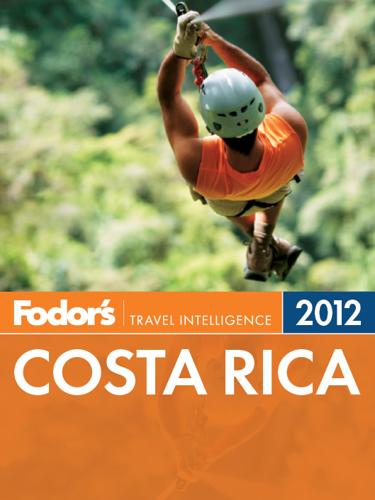
Fodor's Costa Rica 2012
by
Fodor's
Published 6 Oct 2011
Shopping in Ballena Marine National Park Next door to Mystic Dive Center is Green Leaf Arts & Artesania (Centro Comercial Ventanas, near Km 174, 1 km/½ mi north of Ojochal | 60504 | 2786–5233), with a great selection of high-quality local art, indigenous crafts, and eclectic home accessories, plus a wide selection of field guides and jewelry. Next door at the Licorera Feliz (same owner), you can pick up imported snacks, cheeses, and treats for a beach picnic, as well as imported beer and wine from the best selection available in the area. Both stores are open daily from 9 to 6. Brand-new Super Comida ( 2786–5123), also next door, also stocks local and international groceries and has a used-book exchange, open daily 7 to 6. Previous Chapter | Beginning of Chapter | Next Chapter | Table of Contents Previous Chapter | Next Chapter | Table of Contents Golfito | Playa Zancudo | Playa Pavones One of only three tropical fjords in the world, the Golfo Dulce has 180-meter-deep (600-foot-deep) waters in the center of a usually placid gulf where visitors can get out on boats or kayaks to watch dolphins swim and humpback whales feed.
…
Rental Cars When you reserve a car, ask about cancellation penalties, taxes, drop-off charges (if you’re planning to pick up the car in one city and leave it in another), and surcharges (for being under or over a certain age, for additional drivers, or for driving across state or country borders or beyond a specific distance from your point of rental). All these things can add substantially to your costs. Request such extras as car seats and GPS devices when you book. Rates are sometimes—but not always—better if you book in advance or reserve through a rental agency’s Web site. There are other reasons to book ahead, though: for popular destinations, during busy times of the year, or to ensure that you get certain types of cars (vans, SUVs, exotic sports cars).

Lonely Planet Norway
by
Lonely Planet
Up on the 3rd floor near the fish market, it's a rustic, cosy space with fine water views – and the beers are barnstorming. VågenCAFE ( MAP GOOGLE MAP ; %93 96 34 50; Kong Oscars gate 10; h9am-7pm Sun-Thu, 9am-8pm Fri & Sat) Coffee beans from Ethiopia, Brazil and Colombia are just a few of the selection available at this studiously shabby coffee bar, ideally placed for a caffeine fix after wandering around Bryggen or the harbour. There's a cute garden out back and plenty of pastries to munch, and there's free coffee cupping every Friday at 9am. ApollonBAR ( MAP GOOGLE MAP ; %55 31 59 43; www.apollon.no; Nygårdsgaten 2a; h10am-midnight Mon-Sat, noon-midnight Sun) Sink a beer while you browse for some vintage vinyl at this too-cool-for-school record store and late-night hangout, in business since the early '80s.
…
Also avoid contracts with limited mileage, as this can rapidly make a cheap deal very expensive indeed. Check the condition of the tyres and the spare wheel (especially if you're travelling in winter); make sure to note any damage to the vehicle before departure, and have it noted on your copy of the contract. GPS units are usually available to hire, but it's cheaper to bring your own, assuming it has the relevant maps loaded, of course. Many mobile phone companies now offer packages that allow you to use your data allowances overseas, which makes using online map services feasible – although it can be a huge pain if you suddenly lose service in the middle of nowhere.
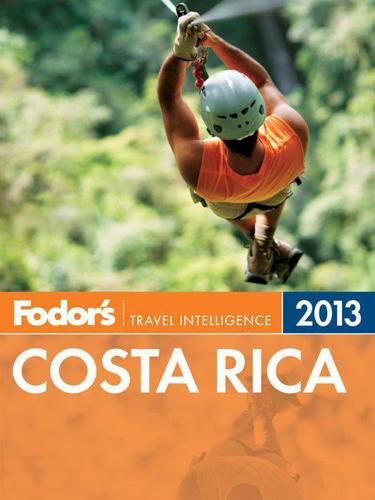
Fodor's Costa Rica 2013
by
Fodor's Travel Publications Inc.
Published 1 Oct 2012
Next door to Mystic Dive Center is Green Leaf Arts & Artesania, with a great selection of high-quality local art, indigenous crafts, and eclectic home accessories, plus a wide selection of field guides and jewelry. Next door at the Licorera Feliz (same owner), you can pick up imported snacks, cheeses, and treats for a beach picnic, as well as imported beer and wine from the best selection available in the area. Both stores are open daily from 9 to 6. Brand-new Super Comida (2786–5123), also next door, stocks local and international groceries and has a used-book exchange, open daily 7 to 6. | Centro Comercial Ventanas, near Km 174, 1 km/½ mile north of Ojochal | 60504 | 2786–5313. Previous Chapter | Beginning of Chapter | Next Chapter | Table of Contents Previous Chapter | Next Chapter | Table of Contents Golfito | Playa Zancudo | Playa Pavones One of only three tropical fjords in the world, the Golfo Dulce has 180-meter-deep (600-foot-deep) waters in the center of a usually placid gulf where visitors can get out on boats or kayaks to watch dolphins swim and humpback whales feed.
…
RENTAL CARS When you reserve a car, ask about cancellation penalties, taxes, drop-off charges (if you’re planning to pick up the car in one city and leave it in another), and surcharges (for being under or over a certain age, for additional drivers, or for driving across state or country borders or beyond a specific distance from your point of rental). All these things can add substantially to your costs. Request such extras as car seats and GPS devices when you book. Rates are sometimes—but not always—better if you book in advance or reserve through a rental agency’s website. There are other reasons to book ahead, though: for popular destinations, during busy times of the year, or to ensure that you get certain types of cars (vans, SUVs, exotic sports cars).